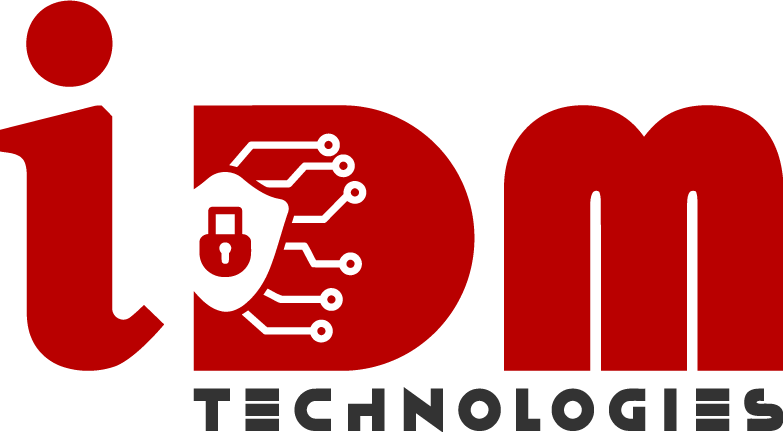Empower Seamless Access with Single Sign-On (SSO) Solutions
Condense insider threats by implementing a robust SSO framework.
In today’s digital-first world, businesses rely on countless applications to manage their operations. However, managing multiple logins and passwords can lead to inefficiencies, security vulnerabilities, and user frustration. Single Sign-On (SSO) solutions provide the perfect answer by enabling users to log in once and gain secure access to all their applications. Enhance productivity, streamline IT operations, and improve security with our industry-leading SSO solutions.
What is Single Sign-On (SSO)?

Single Sign-On (SSO) is an authentication technology that allows users to access multiple applications and systems with a single set of login credentials. By centralizing the authentication process, SSO eliminates the need for multiple passwords, enhances security, and simplifies the user experience.
Our Enterprise Single Sign-On solutions are designed to:
- Simplify access to cloud and on-premises applications.
- Eliminate password fatigue and reduce IT helpdesk costs.
- Enhance security with features like multi-factor authentication (MFA).
Key Benefits of Single Sign-On (SSO) Solutions
Boost Productivity and Efficiency
SSO reduces time spent on password recovery and login issues, streamlining access to tools with a single login.
Enhanced Security
SSO, integrated with MFA and Federated Identity Management, ensures secure access and protects sensitive data.
Cost Reduction
SSO reduces IT operational costs by lowering helpdesk ticket volumes and administrative overhead.
Frictionless User Experience
Cloud-based SSO provides seamless, secure access for employees across devices and locations.
Features of Our Single Sign-On Solutions
Federated Identity Management
Our SSO solutions include federated identity management, allowing secure access across multiple organizations and domains. This is essential for enterprises that need to integrate with partners or operate in complex IT ecosystems.
Centralized Authentication
By centralizing authentication, businesses can improve security, streamline compliance reporting, and reduce the risk of data breaches.
Scalability and Flexibility
Whether you’re a small business or a global enterprise, our SSO solutions scale effortlessly to meet your needs, ensuring secure access as your organization grows.
Advanced Security Measures
Protect user identities with features like session monitoring, role-based access control (RBAC), and encryption. Combine SSO with MFA for an added layer of security.
Best Practices for Implementing SSO
- Prioritize Security Integrate SSO with multi-factor authentication to ensure robust security.
- Start with a Pilot Program Test the solution with a smaller user group to identify and resolve any challenges before a full-scale rollout.
- Ensure Compliance Ensure that your SSO solution aligns with industry regulations like GDPR, HIPAA, or PCI-DSS.
- Partner with Experts Collaborate with experienced SSO providers for seamless implementation and ongoing support.
How to Set Up Single Sign-On for Your Business?
Implementing SSO involves a series of critical steps to ensure a successful rollout:
- Assess Your Needs Identify the applications, systems, and users that require SSO integration.
- Choose the Right SSO Provider Select from top Single Sign-On solutions for enterprises that align with your business needs.
- Integrate with Existing Systems Ensure compatibility with your current IT infrastructure, including on-premises and cloud applications.
- Educate Your Team Train employees on using SSO to maximize adoption and security.
- Monitor and Optimize Continuously monitor usage and make necessary adjustments to improve performance and security.
Benefits of SSO for Cloud Applications
With more businesses migrating to the cloud, SSO for cloud applications provides a unified and secure solution for managing user access:
- Simplify login processes with one-click access to SaaS tools.
- Protect against credential theft with centralized authentication.
- Improve compliance with automated audit logs and reporting.
SSO and Federated Identity Management: The Perfect Combination
Federated identity management complements SSO by enabling secure authentication across multiple domains without requiring users to remember multiple credentials. This combination is invaluable for:
- Enterprises with global operations.
- Businesses working with external partners.
Organizations aiming to enhance customer experiences with unified access.
Top Single Sign-On Solutions for Enterprises
When selecting an SSO provider, look for features such as:
- Advanced security measures, including MFA and encryption.
- Seamless integration with cloud and on-premises applications.
- Scalability to accommodate growing needs.
Robust reporting and analytics tools for compliance.
Frequently Asked Questions (FAQs)
What is SSO authentication?
SSO allows users to log in once and access multiple applications, simplifying management and enhancing security.
Can SSO be integrated with existing IT systems?
Yes, modern SSO solutions integrate with both cloud-based and on-premises systems.
What are the security benefits of SSO?
SSO centralizes authentication and integrates with MFA and federated identity management to strengthen security.
How does SSO improve productivity?
SSO eliminates the need for multiple passwords, allowing employees to access all tools with a single login, reducing time spent on login issues.
What are the best practices for implementing SSO?
- Integrate MFA for enhanced security.
- Start with a pilot program.
- Ensure compatibility with existing systems.
- Train employees.
- Continuously monitor and optimize.
What are the Top SSO solutions for enterprises?
Leading SSO solutions offer centralized authentication, federated identity management, and compatibility with cloud and on-premises apps.
How to set up SSO for employees?
- Assess your needs.
- Choose the right provider.
- Integrate with IT systems.
- Test and deploy.
- Provide training.
What are the Benefits of SSO for cloud applications?
- Enhanced security with centralized authentication.
- Improved user experience with one-click access.
- Simplified IT management.
- Compliance with automated audit logs.
Conclusion
Single Sign-On solutions are essential for modern businesses aiming to enhance security, simplify access, and boost productivity. With features like SSO authentication, federated identity management, and SSO for cloud applications, our solutions provide a comprehensive approach to access management. Partner with IDM Technologies today to implement an SSO solution tailored to your needs and stay ahead in the digital landscape.
